World Book Week writing competition results. . . and other news
3June 6, 2017 by Lydia Syson
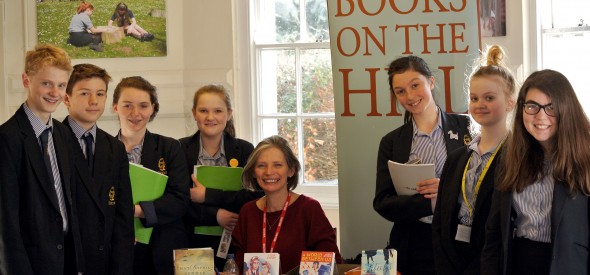
Authors aren’t just for World Book Day, and the positive effects of an author visiting a school continue to have an impact long after books and banners have been packed up. (Here I am at Sidcot School, Somerset, where bookseller Books on the Hill kindly looked after sales and signing.) Not that the author always sees this. Happily, some of the schools I visited in March this year have sent me a selection of the writing their students produced in response to our sessions. I promised to send a hardback copy of the US edition of That Burning Summer to the author of the story I liked best. Little did I realise how hard it would be to choose.
On these particular visits, we spent time together looking at the various different sources that fed into the writing ofThat Burning Summer – family stories and obsessions, a familiar landscape, maps, artefacts in local museums, and above all WW2 propaganda material. Particularly important to this novel was a 1940 leaflet called If the Invader Comes, which, through an alarming set of ‘rules’, told citizens how they should behave if the country was invaded. I wanted to inspire students to think creatively about the relationship between history and fiction, research and the imagination. We considered a question all story-writers constantly ask themselves – ‘What if?’ – and also why writers of historical fiction have to be particularly alert to another: ‘Where are we in time and space?’*
I’ve enjoyed a truly splendid mixture of scenes, beginnings, letters, complete stories, and, in one case, what could only be described as a novella. I’m sorry I can’t mention all the entries, which included a a great deal of beautiful and ambitious writing, or give everyone prizes, but I hope this round-up will illustrate the quality and variety.
Many of the entries took one or other of the leaflet’s rules as their starting point. The order to ‘stay put’ in Rule No. 1 seemed to have made a particular impression, but Hannah Walton-Hughes (The Mount School, York) wrote a particularly chilling story of betrayal inspired by Rule No. 2: ‘Do not believe rumours, and do not spread them.’ It ends with these words:
‘One lesson I have learned from this experience is that you can never fully trust someone unless you know their whole story. I suppose you could say that I should have read between the lines, and I should have realised the rumours she was spreading. But that is easier said than done. Because there is only one things that blinds us more than poison gas. Love. And friendship.’
Most writers set their stories in World War Two, but quite a number dealt with other times and places altogether, from the Easter Rising to the Velvet Revolution, from Nairobi to Vienna. The impact of war and violence on the lives of individuals was thoughtfully realised, often in unexpected ways: Indeigh Winterson of Sidcot School addressed the hopelessness of fleeing from the atom bomb in Hiroshima. There were entries that stood out for sheer drama – special mentions here to Stanley Wiseman, Charlotte Fuller & Louise Colechin (Rainham Mark Grammar School). I also enjoyed some very recognisable depictions of Kentish marshes. Sophie Lofthaire and Isla Brown, both of The Mount School, wrote stories that were impressively atmospheric and poetic in their lyricism. Isla’s bold treatment of schizophrenia was both original and arresting, while Sophie’s story had an other-worldly air:
The marshes are blank and exposed in Winter. They are made up of criss-crossing lines of green and white and brown and black. The green is the low, scrubby grass. The white is the snow that swirls around in the chilled air. The brown is the mud which sticks to everything it can get its gloopy, grasping hands on. The black is the night sky dotted with brilliant stars that lurk on the horizon and spreads like a blanket over your head. The lines intertwine as I run over the marshes.
Others moved me because they evoked so well the intensity of chance emotional connections between strangers in wartime (one example is Luca Cuckson of Sidcot). Anna Sties (The Mount School) retold a true story from her family’s past, hauntingly recreating an encounter between Hitler and her own grandfather in Munich when he was a boy. Matthew McCue (Rainham Mark) wrote a convincing portrayal of the family reaction to a young man’s decision to join the RAF, like his absent father, and ‘do his bit’. Hearing his Dad’s voice on the radio-com becomes a highlight, especially on the first ‘real’ field mission to drop supplies in France:
‘We were having the time of our lives, felt like the whole sky was ours, until dreaded news came in. . .’
I was impressed by the sophistication of the ideas expressed in Jacob Perry’s A Conflict of Interest, while Sarah Carr’s Twenty Reasons to go to Vienna appealed as it reminded me of two of my own favourite childhood stories, National Velvet and Airs Above the Ground. Sarah and Jacob are both at Sidcot School.) So thank you, everybody, for letting me read your writing, and thank you also to the librarians and teachers who made it possible and welcomed me so warmly to your schools.
And that novella I mentioned? Huge congratulations to James Barber of Sidcot School, for These Talking Walls, a political thriller set in Prague in the early days of the Velvet Revolution. Astonishingly mature, this intricately plotted, well-researched and genuinely suspenseful tale of heroism and betrayal wins James a copy of the US hardback edition of That Burning Summer, and my profound admiration. You can read it here, and you are very welcome to leave a comment.
Other news:
– I’ve been able to update my blog post on the history of the Polish pilots in the Battle of Britain with some wonderful photographs of the vanished pilot Stanisław Duszyński and his wartime fiancé, Czesława. Many thanks to her granddaughter for getting in touch.
– Last weekend I visited an exhibition now on at the Islington Museum called ‘Banners for Spain‘ (in collaboration with the Marx Memorial Library), which tells the story of Islington’s involvement in the Spanish Civil War and illustrates the reach of the Aid Spain movement. Catch it if you possibly can before July 8th. Full details and related events, including guided walks, here.
– My Paris Commune novel, Liberty’s Fire, has recently been picked out in two different round-ups. In Books for Keeps it’s among Ten of the Best Novels to Introduce Children to Politics‘ while the US Barnes and Noble teen blog selected it as one of 5 YA Books for Sarah Waters fans: ‘Even if you know nothing about the Commune of Paris or the Franco-Prussian War (before reading this, I certainly didn’t), Lydia Syson’s incredible worldbuilding will have you feeling as if you’re right there with them—running through the streets and crying revolution while Paris is burning.’
– Don’t forget the first ever National Writing Day takes place this month on June 21st. I’ll be taking part through CWISL’s schools writing festival, Shoutsouth! at London’s South Bank university, June 19-20th. This video for our sister festival, Shoutwest!, will give you a good feel for what we’re planning.
*This is question I’ve stolen from Jenny Offili’s Dept of Speculation, although I should point out her use of it is both layered and ironic.
Category News | Tags: author visits, books to introduce children to politics, historical fiction, Island of Last Hope, Liberty's Fire, Rainham Mark Grammar School, Sidcot School, That Burning Summer, The Mount School, winner, World Book Day, World Book Week, writing competition, YA for Sarah Waters fans

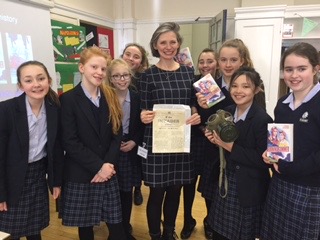
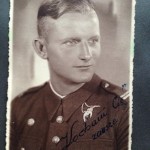
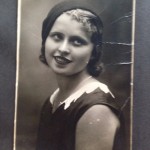
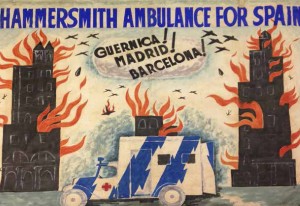

Lydia,
I love hearing about your school visits and the writing entries of the students. Such a creative idea. It is fascinating to see what students will write about that time period. It’s touching that someone wrote about Hiroshima. Thank you for sharing this post with us!
It’s wonderful, isn’t it? Thanks so much for your comments, Kathleen.
Thank You very Much